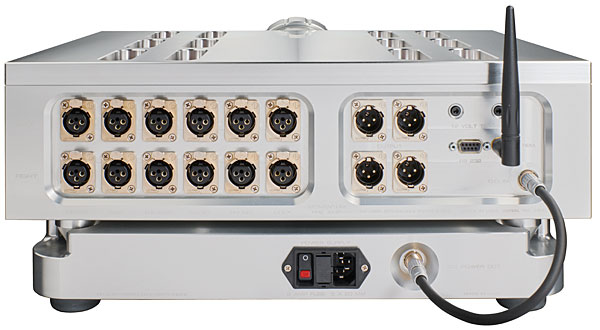D'Agostino Momentum HD Preamplifier

 While we await the Relentless Preamp the 'HD' remains D'Agostino's top model, with its Bluetooth remote and raft of subtle enhancements culled from the MLife integrated
While we await the Relentless Preamp the 'HD' remains D'Agostino's top model, with its Bluetooth remote and raft of subtle enhancements culled from the MLife integrated
Ordinarily, I prefer to ignore the vexing topic of prices. My attitude is simple: if I can't afford something, I don't take it out on the world. I can't afford a Bugatti T57SC Atlantic, but I don't hate Ralph Lauren for owning one. So let's get two things out of the way, the first being that the D'Agostino Momentum HD Preamplifier costs £47,998, making it one of the most expensive control units on the planet.
This, however, is totally commensurate with the pricing of the power amplifiers in the D'Agostino catalogue, so it makes sense in that context. Reality check, for as painful as it seems, Extinction Rebellion types are not potential HD owners. Rich guys are. The second is good news, for owners of the earlier Momentum preamp do not have to rail against the heavens about obsolescence. Their units can be updated.
Major Revamp
And the updates are extensive. As they're internal, I was confused momentarily when editor PM sent me the HD because I recall that we had reviewed the preamp before, albeit in non-HD guise [HFN Nov '13]. Perfect timing because a day later, a detailed internal memo arrived from the distributor, outlining the modifications, as described elsewhere in this review by PM.
Thus, unlike second-generation models that have undergone minor cosmetic changes and a tweak or two, this is a major revamp of what was already one of the finest preamps money can buy.
Offered in black or silver, both with the company's distinctive use of copper trim, the Momentum HD is recognisably a D'Agostino product, and it looked like it had come home when sited next to the Momentum Stereo [HFN Aug '12]. (At the risk or inciting the Wrath of Dan, I also used it with the Audio Research REF75SE tube amplifier, which confirmed its magnificence.) As this is the top preamp, it will also be used, no doubt, with the Relentless mono power amp [HFN Mar '20].

Unsurprisingly, there are a couple of quirks wholly consistent with Dan D'Agostino's world view. This is a balanced-only affair, which might prove inconvenient for legacy components that use phono connections but the HD is strictly line-level, so one might presume that those shopping in this price sector can afford to add the matching D'Agostino phono stage. Staying balanced all the way wasn't a chore for me, as I used the Marantz CD-12/DA-12 CD player and the Otari MX5050 open-reel deck, which provided assessment with both analogue and digital sources.
Complete Control
Another oddity here – refreshing, if you're of the more-is-more mind-set – is the inclusion of tone controls. These work subtly and proved useful with iffy recordings, eg, if one is found with absurdly overloaded bass, so I am not averse to them as I have no doubt that when they're not in use, they're out of circuit. The tone controls are not accessible from the remote, but that's a minor issue because all of the other functions are, and the remote is now Bluetooth, so you don't need line-of-sight at the unit to use it.
Set-up – the ludicrous weight of the unit aside – was easy-peasy, especially if slotting it into an existing, all-balanced system. Transferring XLR cables? Two minutes maximum. Power on at the rear, press the standby button and you're in business. The volume control via the signature watch-style bezel around the meter still gives me a kick, what with my horological tendency, and the feel of the buttons' action also reminded me of superior chronograph pushers.
The Momentum HD is everything that I have been screaming about for three decades: a presence so luxurious that the Swiss and the Germans will only be able to look on with awe and envy. So, for the umpteenth time, when you pay this kind of money for hi-fi, you deserve a product that looks like it was made by a top jeweller, not a travelling basket-weaver.
![]() Right On Time
Right On Time
It doesn't take a pair of golden ears to recognise, from the first notes, that the Momentum HD speaks with unparalleled authority. That Breguet-style meter may seem an odd conceit, but the reference is apposite: Abraham-Louis Breguet was arguably the greatest watchmaker who ever lived, and his raison d'être was a lifelong quest for precision in time-keeping.


















































